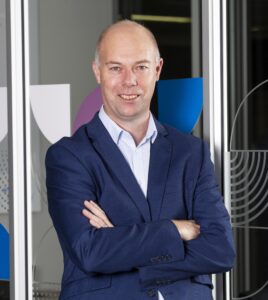According to a global financial planning tech survey, 93% of financial planners agree that technology is critical in their practices. However, only 38% of advisers are confident that they are getting technology decisions right.
What does this technological revolution mean for the future of South Africa’s financial planning sector? According to Heinrich Punt, General Manager for Intermediaries at Sanlam, navigating this new financial planning landscape requires a seamless blend of the physical and digital world—this is dubbed ‘phygital’.

“Financial planning has experienced significant transformation in recent years. Once, the industry was dominated by individual advisers working in isolation. Fast forward, and today’s financial planning landscape, at the forefront, comprises skilled and multidisciplinary professionals who have either aligned with larger organisations with extensive resources or formed teams to solve the holistic needs of clients. There are digital tools for every aspect of an intermediary’s day-to-day practice needs, forcing even the staunchest traditionalist to consider how to adapt for long-term success.”
The AI revolution – is it here yet?
Morgan Stanley recently deployed OpenAI’s GPT-4 artificial intelligence (AI) technology to organise hundreds of thousands of pages of investment strategies, market research, commentary, and analyst insights. This tool now allows its wealth management personnel to instantly obtain insights.
While the global financial sector is adopting these innovations, Punt offers a clarifying distinction for the local landscape. “At this stage, the South African financial industry uses more predictive analytics than pure AI, but this may change quickly. Large firms are employing predictive analytics and harnessing vast data quantities to anticipate client needs; this holds the potential to make financial practices much more efficient when it comes to identifying which clients to engage with and when.”
Punt says AI could undoubtedly ‘supersize’ South African intermediaries’ capabilities once it enters the local fold. “Imagine an intermediary accessing a system like ChatGPT after vast amounts of financial advisory data, client information, and industry trends have been uploaded. They pose a specific query and, within mere seconds, receive a precise response. They can then swiftly interpret this information along with using the advisor’s own expertise and knowledge, tailoring it for their client’s context. What used to be a time-consuming process that could have taken half a day is now accomplished in just minutes.”
The phygital transformation
Punt also notes that digitising the financial planning industry democratises access for smaller financial practices and independent intermediaries. “Digitisation is making it easier for intermediaries who previously lacked the capabilities to offer a fast and tailored service to a vast client base by tapping into digital tools that allow them to do so. Therefore, this industry-wide evolution is incredibly beneficial because it’s breaking down barriers to entry.”
Punt, however, adds that while intermediaries must merge the physical and digital worlds to enable the financial planning experience for clients, the focus remains on leading with the relationship and not merely the advice.
“The onus is on intermediaries to not only evolve processes and embrace new technologies but also recognise that their ability to offer clients relationship-led advice must be at the core of the transforming journey. Client experience should always trump the actual digital advancements.”
Overcoming constraints with digital advancements
Punt says technology has bridged numerous gaps intermediaries struggled to fill, such as geographical distance from their clients. “From e-signatures negating the need for multiple client visits to video conferencing tools maintaining client relationships across vast distances, technology allows intermediaries to grow their client base in new ways, while retaining retain clients with greater ease. We now wrap up engagements that once took multiple hours in a single hour.”
Punt adds that Sanlam has embraced technology that enables client led engagements or ‘co-planning’, where the client actively collaborates with the intermediary. “Informed clients can now lead their financial journeys, partnering with advisers rather than merely following recommendations. We need to recognise this major shift in client-adviser dynamics.”
Financial planning and behavioural finance
Beyond digital advancements, a holistic approach to financial planning means diving deeper into the client’s relationship with money. Here, Punt says behavioural finance comes into play. “By understanding a client’s money personality and combining this knowledge with financial planning tools, intermediaries can craft and better position authentic financial plans with an improved probability of success due to client buy-in.”
Preparing for a phygital future
Punt’s vision for the future is one where the local industry thrives as intermediaries evolve and embrace their own digital journeys. He concludes, “The financial planning industry is at the cusp of a significant evolution. Intermediaries can continue to embrace this new phygital world by integrating technology and maintaining the human touch in advisory roles to future-proof their practices.”

